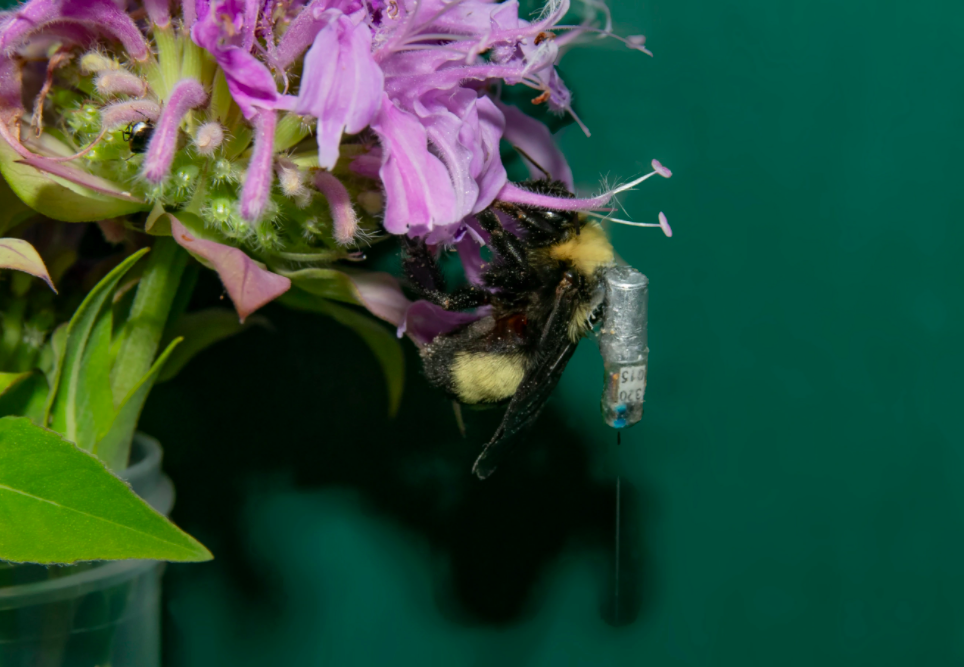ON Semiconductor & Lotek Wireless Technologies Are Saving Honeybees

Read on the ONSemiconductor blog
Ecosystems can be dramatically changed or affected due to the introduction of a new species. The first confirmed sightings in North America of Asian Giant Hornets (sometimes referred to by the media as ‘Murder Hornets’) occurred in 2019 in Washington State. This was worrisome news. Asian Giant Hornets can have a severe effects impact on honeybee colonies; essentially wiping out a honeybee colony in one day. Controlling or stopping the spread of Asian Giant Hornets is a critical task and remains so. Individual Asian Giant Hornets could be captured, but that would never be enough to slow their spread and potential devastation they could cause. A method was needed to locate their nests.
Entomologists tried several technologies to follow these hornets, but only one proved successful. While named Giant Hornets, the insects are still lightweight, and the researchers needed to track them while they flew. A miniature and lightweight tracking device was needed. Lotek, a Canadian-based telemetry technology company, already had a suitably sized radio transmitter, officially known as the NanoPin (NTP-1). The NanoPin utilizes a custom hybrid circuit made by ON Semiconductor. Asian Giant Hornets were captured and NanoPins were attached to three of the insects. Using Lotek’s SRX800 Receiver and a Yagi Antenna to decode and provide the researchers with direction, one of the tagged hornets lead them straight to its nest. The entire nest of hornets was subsequently removed, to the great relief of beekeepers.
The NanoPin is the smallest and lightest VHF tag currently offered by Lotek, essential for such a light flying insect. A fully finished NanoPin with the battery, antenna and encapsulation has a mass of about 130 milligrams. The body of this tag is cylindrical, 11 mm long and 3 mm in diameter. NanoPins are available with digitally coded or traditional beeper signals.
The custom hybrid circuit is made by ON Semiconductor in Burlington (Ontario, Canada). Lotek uses this circuit in several VHF transmitters designed specifically for wildlife radio telemetry applications. These transmitters are made in a number of different configurations depending on the target species, attachment methods and desired operating life. The core engine of the tag is Lotek’s proprietary mixed-signal ASIC, which is uniquely programmable and tuned through a contactless interface using modulated light (infrared and visible). The impressively small size of the overall assembly is owed to the technological expertise of ON Semiconductor.
The decade-long collaboration between ON Semiconductor and Lotek originally produced digitally coded NanoTags. Their continuing collaboration has now reduced the size of these tags so that species such as hornets, dragonflies and even butterflies can be tracked. Researchers have deployed hundreds of thousands of NanoTags on other species all over the world. The movements of fish, mice, spiders, bats, insects, birds and more have all been tracked via NanoTags, with surprising and useful revelations. The information obtained has led to countless improvements in humans and animals coexisting. As an example, changes to water spill patterns at dams now allow for the safer passage of salmon smolt. Revised on/off schedules of wind turbines has dramatically decreased bat deaths during migration.
Subscribe to the ON Semiconductor blog to learn more!

